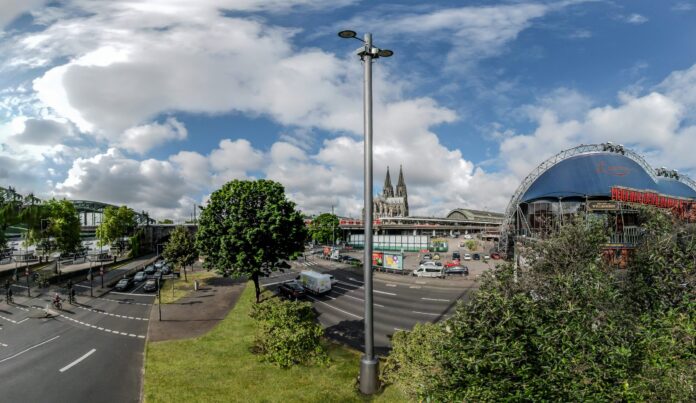O2 Telefónica said that the project will begin in the 25 largest German cities in 2025
In sum – what you need to know:
O2 Telefónica begins nationwide 5G streetlight rollout – The German operator and 5G Synergiewerk are deploying 5G-equipped smart poles in the 25 largest cities starting this year.
5G streetlights target events and busy zones – After successful pilots in Cologne during the 2024 European Championship, installations are expanding to event hubs like Oktoberfest (Munich), Rheinkirmes (Düsseldorf) and Hamburg Dom.
Streetlights replace traditional masts – The new smart poles combine LED lighting with small 5G antennas and fiber connections, delivering faster, more reliable service where rooftop space is limited and data demand is high.
German carrier O2 Telefónica and infrastructure partner 5G Synergiewerk have started a nationwide rollout of 5G streetlights, with the main aim of boosting mobile network coverage in busy city centers and tourist areas across Germany.
In a release, the telco noted that the innovative project will begin in the 25 largest German cities in 2025, with plans to expand even further in the future.
O2 Telefonica said that these 5G streetlights replace traditional lamp posts and come equipped with small antennas that deliver faster mobile connections. They are designed to blend in with the cityscape and provide better network performance where rooftops are limited and mobile data use is high.
“We want to promote sustainable digital connectivity for consumers and businesses in cities,” said Matthias Sauder, director of networks at O2 Telefónica. “Whether streaming, video telephony or the networking of intelligent sensors, we are bringing even faster networks to citizens’ doorsteps and into business locations.”
The European carrier highlighted that the first 5G streetlights are already live in Cologne, Frankfurt am Main and Würzburg. The lights proved successful during the 2024 European Football Championship in Cologne, helping fans stay connected. More installations are planned for Frankfurt (Kornmarkt, Nibelungenplatz, Mainzer Landstraße), Cologne (Heumarkt), Hanover (Maschsee) and Stuttgart (Bopser) throughout 2025.
5G Synergiewerk is negotiating contracts with city administrations for this purpose. By the end of 2025, 50 more streetlights are expected to be up and running.
5G Synergiewerk is also focusing on major event locations, such as Oktoberfest in Munich, the Rheinkirmes fair in Düsseldorf and the Hamburg Dom fair, to ensure strong mobile performance during peak traffic.
“We support cities in implementing new smart city solutions and a future-proof infrastructure,” said Ralf Gerbershagen, managing director of 5G Synergiewerk. “By replacing conventional streetlights with modern 5G streetlights, cities have multifunctional tools that not only provide their citizens with nighttime lighting, but also a better mobile network.”
Beyond cities and events, the project will extend to tourist areas like the North Sea, Baltic Sea and Lake Constance, where strong mobile service is crucial during holiday seasons. Local businesses are also expected to benefit from the improved connectivity, said O2 Telefonica.
The new smart poles use energy-efficient LED lights and are connected to the 5G network through fiber optic cables.
In October 2023, O2 Telefonica announced the launch of its 5G Standalone (SA) network in the country under the 5G Plus brand. Until this launch, the German telco had been offering 5G services through the NonStandalone (NSA) 5G architecture partly via its LTE/4G core network.
The carrier had noted that the 5G SA network will enable customers to have access to voice-over-new-radio (VoNR) technology, which enables them to make calls with even better voice quality over the 5G network.
O2 Telefónica said it has already been using the 5G SA technology in 5G campus networks for companies and public authorities since 2020. With this new launch, the company noted that more companies in different sectors such as industry, healthcare and the public sector will have access to improved connectivity.
The carrier’s 5G Plus uses frequencies in the 700 MHz, 1.8 GHz and 3.6 GHz bands.
The telco said it expects its 5G SA service to reach full coverage in Germany by the end of 2025.

